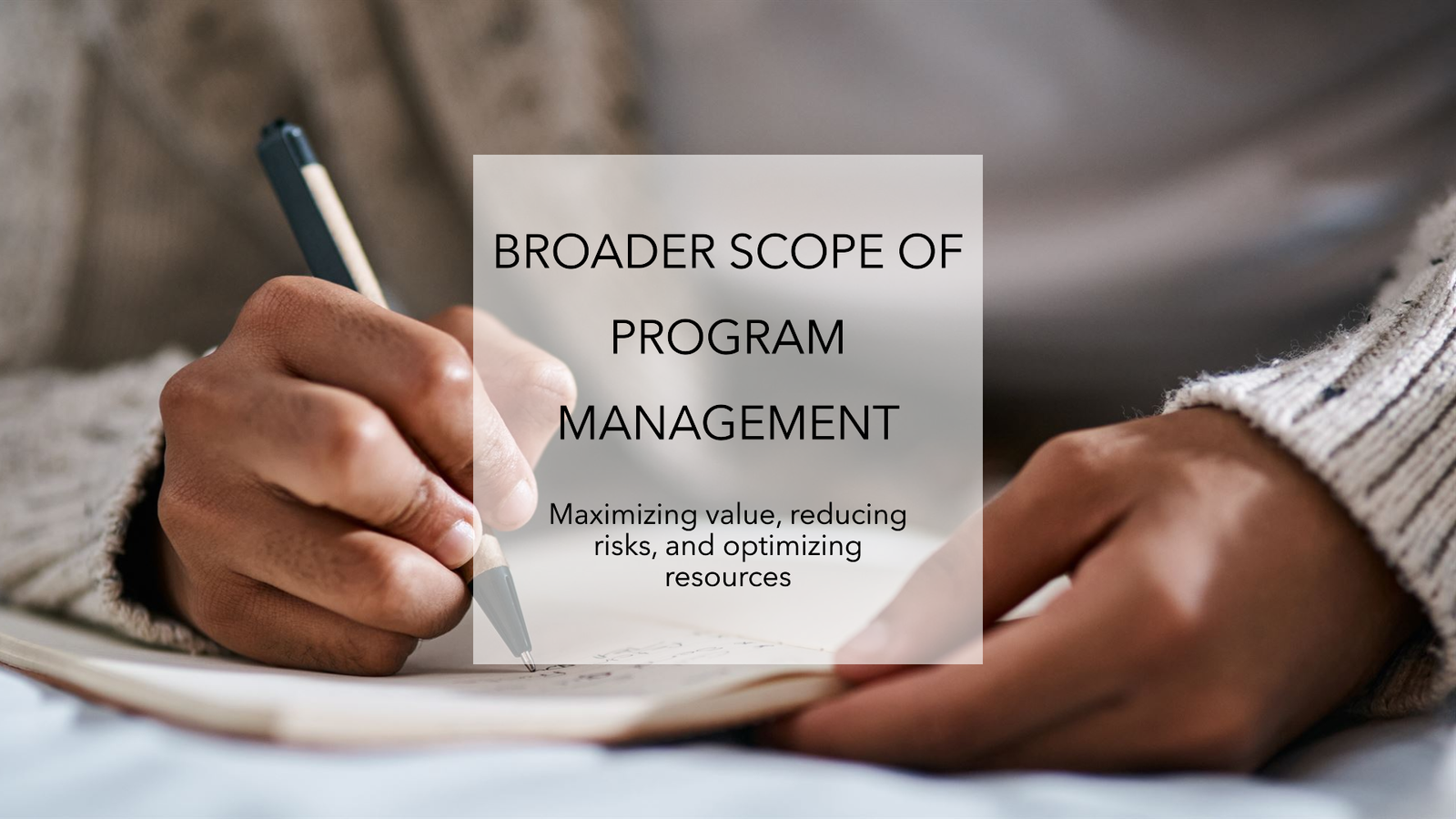The Broader Scope of Program Management: Integrating Project, Program and Portfolio Management
Program management plays a critical role in achieving organizational objectives by orchestrating multiple related projects. Its broader scope encompasses not only the coordination of these projects but also the alignment with strategic goals through integration with project and portfolio management. Understanding the distinctions between project, program, and portfolio management, and how they interact, is essential for organizations looking to maximize value, reduce risks, and optimize resources.
Defining the Roles –
- Project Management focuses on the successful completion of individual projects, delivering specific outputs or results within set constraints, such as time, budget, and scope. It is a temporary endeavor with defined objectives and a clear beginning and end.
- Program Management goes beyond individual projects by managing a group of related projects that together achieve a broader strategic objective. Program managers ensure that these projects are aligned, their interdependencies are managed, and resources are allocated effectively to meet the overarching goals of the program.
- Portfolio Management is the highest level of management in this hierarchy. It focuses on aligning the organization’s strategic objectives with its programs and projects. Portfolio managers evaluate and prioritize programs and projects to ensure they contribute to the overall vision of the organization, optimizing resources and balancing risks.
The Integration of Project, Program, and Portfolio Management
Integrating these three disciplines is crucial for organizations striving for operational efficiency and strategic success. This integration ensures that:
- Strategic Alignment: Portfolio management helps organizations prioritize programs and projects that support their long-term vision. Program managers can then align related projects to ensure that resources are focused on initiatives that provide maximum strategic benefit. Project managers execute tasks that directly contribute to these broader objectives, maintaining clarity on how their work supports higher-level goals.
- Optimized Resource Allocation: Effective integration ensures the optimal use of resources across projects, avoiding overlaps or resource constraints. Program managers coordinate resources to maintain balance among multiple projects, while portfolio managers monitor overall resource availability and strategic allocation, ensuring the organization does not overextend itself.
- Risk Management: At each level, risks must be identified and mitigated. Program managers address inter-project risks and dependencies, while portfolio managers evaluate risks across all programs and ensure risk mitigation aligns with the organization’s risk tolerance. This integrated approach ensures that projects are not managed in isolation but as part of a larger ecosystem.
- Governance and Reporting: Consistent governance across projects, programs, and portfolios leads to better decision-making. Program managers provide oversight across their related projects, while portfolio management offers a broader view, ensuring that governance structures and reporting mechanisms are in place to track progress and make informed adjustments.
Program management serves as the bridge between the execution of projects and the realization of organizational strategy. By integrating project, program, and portfolio management, organizations can ensure that their initiatives are not only completed efficiently but also aligned with broader business goals. This holistic approach fosters better decision-making, resource allocation, and risk management, allowing companies to adapt to changing market conditions while staying focused on their long-term objectives.




